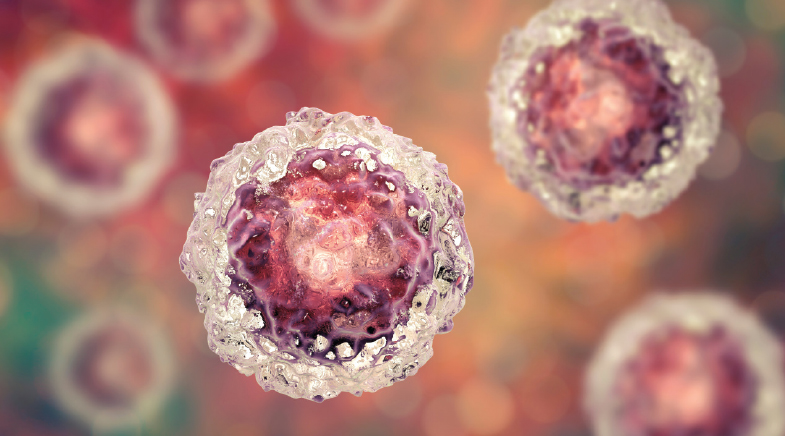Clouds on Earth
-
- from Shaastra :: vol 04 issue 07 :: Aug 2025

A proposed cloud chamber can improve climate models, inform weather-modifying attempts, and control fogging in urban centres.
In a joke that is common in the world of physicists, a farmer calls a set of professionals in various disciplines to suggest ways of increasing milk production. He receives varying kinds of advice: increase the diameter of the pipe, and paint the barn green. One of the professionals, a physicist, asks for a blackboard and tells the farmer: "Imagine that the cow is a sphere..." This joke was framed partly to make fun of physicists who use simplified models of nature in their theories, and partly to show that such simplified models can provide good insights into nature.
At the Indian Institute of Tropical Meteorology (IITM), Pune, meteorologists are building their own version of the spherical cow. It is a large, enclosed chamber where clouds form and exhibit properties that are similar to the situation in the atmosphere. It is a simplified version that creates conditions that are of special interest to Indian meteorologists: the monsoon clouds and pollutants in the atmosphere. The behaviour of monsoon clouds is poorly understood and not studied much around the world, but a good understanding of it is vital for charting the monsoon and modelling future climate over the subcontinent.
When the cloud chamber is completed in two years, it will be a cylindrical enclosure 16 metres tall, 4 metres long and 4 metres wide. "It will need a separate building to house it," says Thara Prabhakaran, a senior scientist at IITM, Pune, who leads this effort. After it is built, scientists will collect data that can improve existing climate models. In the process, they will also develop an understanding of weather modification and how aerosols – suspension of particles in the atmosphere – can affect cities and their microclimates. To mention a specific example, scientists can study how fog forms in polluted cities. Such knowledge may also provide a means of reducing fog in the future.
Cloud chambers have a long history in physics. The most famous of them was built by the Scottish physicist C.T.R. Wilson in 1923 to track the path of electrons. Wilson won a Nobel Prize in 1927 for this work, and cloud chambers became an indispensable tool for physicists to study elementary particles. Wilson used a transparent chamber filled with alcohol vapour that condensed when cooled by dry ice – solid carbon dioxide – placed at the bottom. When a charged particle, such as a cosmic ray or radioactive particle, passed through the chamber, it ionised the gas in the chamber and formed a condensation trail that could be seen from the outside.
The cloud chamber at IITM, Pune, will be different from Wilson's version, and it won't be used to study charged particles. It will be a cylindrical enclosure where scientists will add water vapour and aerosols, and watch them form clouds. Cloud chambers at the Karlsruhe Institute of Technology (in Germany) and at Michigan State University (in the U.S.) depend on ice for cloud formation, while the Pune chamber will not. In India, the main areas of interest are the dynamics of the monsoon and how this relates to rainfall. An understanding of cloud physics and turbulence helps in more accurate weather forecasting and climate modelling. Observations of clouds are crucial, as are computer simulations.
The planned cloud chamber will improve mathematical climate models; in turn, that will make for better weather predictions.
The cloud chamber will complement the conventional way of making observations of clouds, which is to use balloons that can drift through the clouds, and special aircraft with sensors that fly into the clouds (It's raining weather models!). While such observations are invaluable, lab-grown clouds in a controlled environment can provide continuous information about clouds as they form. Prabhakaran's group had made a proposal to the Ministry of Earth Sciences to build a cloud chamber. In 2024, the Ministry announced a ₹2,000 crore plan called Mission Mausam to improve the accuracy and resolution of weather predictions. The cloud chamber was part of this project.
According to Prabhakaran, this facility will take cloud physics studies to a different level, as it will feed back into climate models and make them more accurate. This will also serve as a centre where cloud physicists from all over the country can gather and make observations. Govindasamy Bala, a climate scientist at the Centre for Atmospheric and Oceanic Sciences (CAOS), at the Indian Institute of Science, Bengaluru, has a tempered reaction to this. "Capacity building of this kind is very important. The use of these chambers to study aerosol-cloud interactions will be useful in understanding how aerosols will modify the weather."
Cloud chambers in labs around the world serve different purposes. Ice is important to cloud formation in temperate latitudes, and so the cloud chambers in Germany and the U.S. are designed to study ice formation. "For long, it was thought that an ice phase is required for rain or precipitation to form. These were based on measurements made in Europe and America. However, this is not necessary," says G.S. Bhat, Honorary Professor at CAOS, whose interests include tropical clouds. According to Bhat, cloud tops are below the freezing level during the monsoon over the Western Ghats. It means that ice cannot form, but they produce copious, warm rainfall. "In fact, warm rain processes are important in the tropics," says Bhat.
Given the areas of interest to meteorologists in India – the dynamics of the monsoon and how it relates to rainfall – the Indian cloud chamber would be based on convection, a process where warm air rises and sets up the atmosphere in motion. This process facilitates the setting up of convection currents over the ocean, which take the warm, moisture-laden air to the top and enable the formation of clouds.
The cloud chamber will help improve mathematical climate models, which, in turn, is expected to improve predictions of the weather and rainfall. Specifically, it will help study the role of cloud turbulence as the mechanism of broadening the drop-size distribution in clouds, according to Shivsai Dixit, a scientist at IITM, Pune, who is also involved in this project.
In 2010, Pune University and IITM, Pune got together to make a small-sized cloud chamber, just large enough for a person to enter. According to Prabhakaran, one of her students, Sachin Patade, now a scientist at IITM, Pune, used to sit there at –20° Celsius and count the drops for analysis. This will no longer be necessary in the large convective cloud chamber being built now: it will have a window through which laser beams can be pointed to tweak and manipulate the drops formed.
The cloud chamber will also have immediate practical applications in, for instance, weather modification. It will help test the effect of aerosol composition, concentration and size on drop-size distribution in convective turbulence. These studies could pave the way to mitigating foggy conditions that are known to prevail today in several urban centres.
The first version of the cloud chamber will not deal with charged particles. So, in these clouds, there will be no thunderstorms.
"The physical insights they will provide are valuable," says Bhat. The remoteness of clouds and their transient nature make it impossible to follow individual air parcels inside a real cloud, he points out. A lab, on the other hand, provides stable and controlled conditions to make detailed quantitative measurements.
Also read
Luke Howard: the 'Godfather of Clouds'
Climate-altering move may affect Indian monsoon
Let's take a monsoon rain check
Have a
story idea?
Tell us.
Do you have a recent research paper or an idea for a science/technology-themed article that you'd like to tell us about?
GET IN TOUCH














